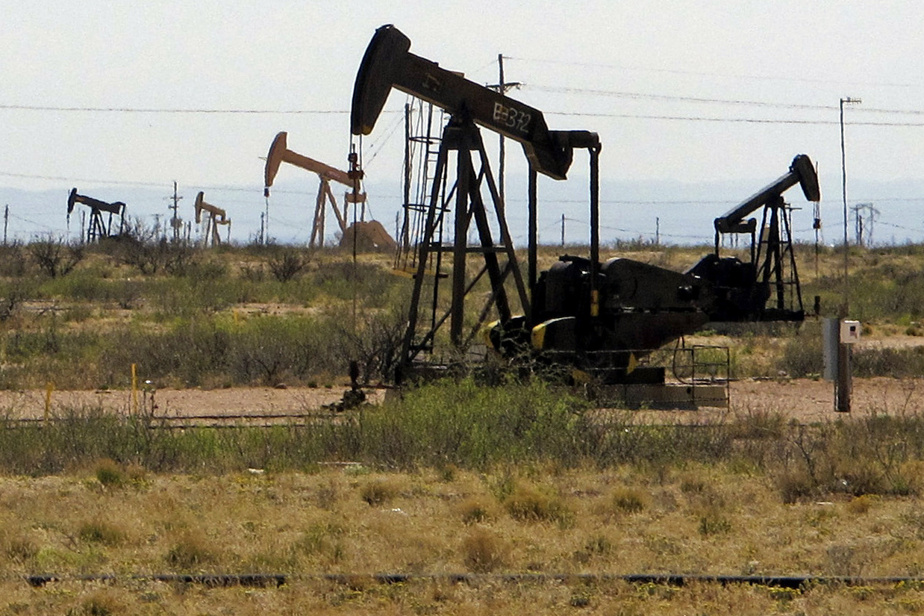(New York) Oil prices concluded on Friday with a small increase, but without managing to increase their gains, due to the easing of fears of supply disruptions from the Red Sea, and European natural gas ended 2023 in slump.
The price of a barrel of Brent from the North Sea, for delivery in March, on its first day of use as a reference contract, fell by 0.14% to $77.04.
Its American equivalent, a barrel of West Texas Intermediate (WTI), for delivery in February, lost 0.16% to $71.65.
“The continuing threat of an extension of conflict in the Middle East means that oil markets must remain vigilant about supply risks,” commented Exinity analyst Han Tan. But the weak market reaction is because the “geopolitical risk premium” has already been “built into prices,” he explained.
Both global oil benchmarks ended the year down around 10%.
Efforts by OPEC+ (Organization of the Petroleum Exporting Countries and their allies) to cut production, along with growing geopolitical tensions in the Middle East, “have remained surprisingly ineffective in boosting appetite for oil this year,” summed up Swissquote analyst Ipek Ozkardeskaya.
Crude prices, however, took off with the offensive by the Palestinian Islamist movement Hamas against Israel on October 7, with the market fearing a geopolitical escalation and supply disruptions.
Without immediate impact on the balance between oil supply and demand, the attack nevertheless aroused strong fears, particularly regarding the possible involvement of Iran in the conflict. The market then quickly estimated that the war should not spread to neighboring countries, major oil producers and exporters.
And although OPEC+ has been slashing its black gold production for months, with voluntary reductions by certain members, crude prices have fallen.
However, the alliance’s strategy had worked for a time, before faltering. Brent even came close to $100 per barrel at the end of September, driven by strong fears of a significant market supply deficit at the end of the year.
Since then, prices have fallen sharply, with the loss of power of the group and disagreements between its members leaving investors more skeptical.
OPEC and its partners now control just over half of global crude production (50 million barrels per day), according to the latest report from the International Energy Agency (IEA), i.e. the lowest share since the establishment of OPEC+ in 2016.
The withdrawal from the alliance on December 21 of Angola, a country which refuses to reduce its production and wants to “concentrate more” on its own objectives, exposed the tensions within the group to broad daylight.
On the European natural gas side, the Dutch TTF futures contract, considered the European benchmark, ended down 4.59% on Friday at 32,095 euros per megawatt hour (MWh).
DNB analysts point out that “European gas demand remains weak, even if we take into account seasonal variations” with the recent cold waves.
After the Hamas attack on Israel, gas prices temporarily jumped, particularly after the announcement of the closure of a major Israeli gas field.
Strikes and threats of strikes at major liquefied natural gas installations in Australia, a major producing country, also boosted prices for a time at the end of the summer.
But the trend remains sharply downward: European natural gas ended the year plummeting by around 58%.
“So far, the winter has been warmer than normal on average, […] and Europe’s storage levels are high, even compared to last year,” explained Rystad Energy analyst Lu Ming Pang.
